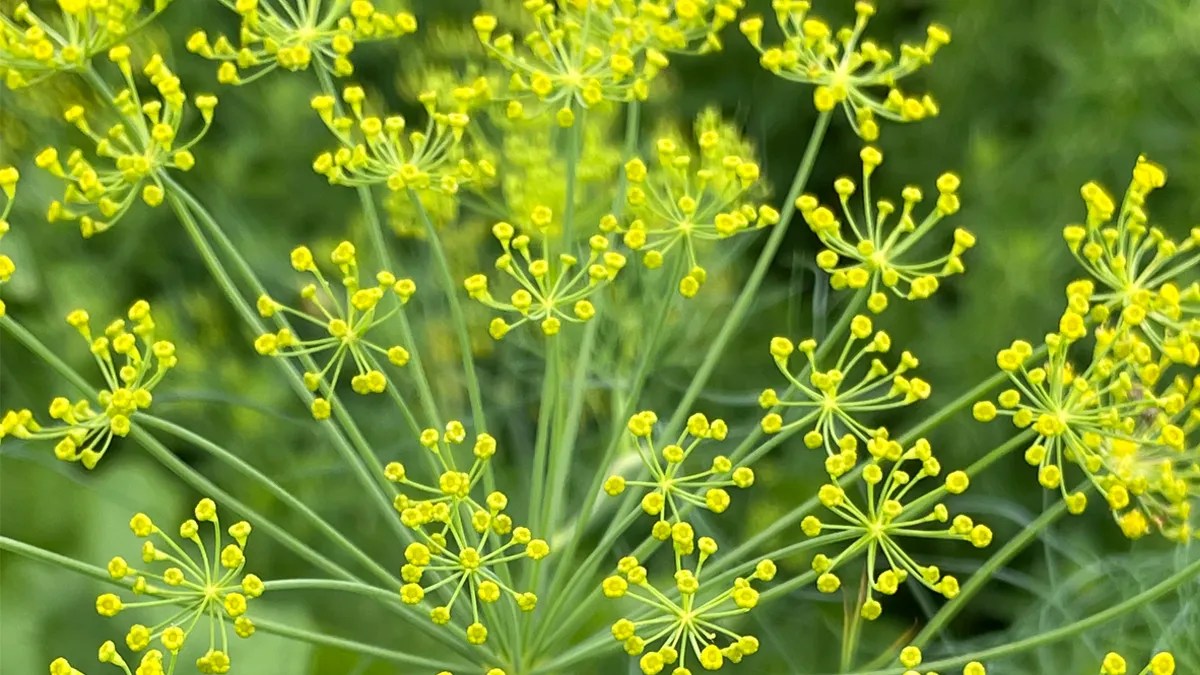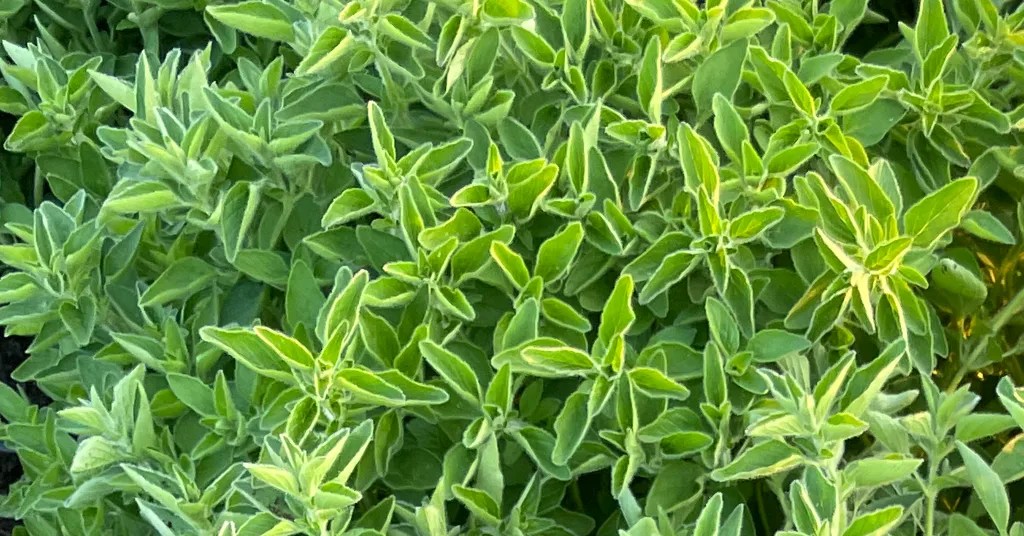This post may carry affiliate link . When you purchase through links on my site , I may realize a charge at no cost to you . See myPrivacy Policyfor details .
Growing your own herbs is one of the most rewarding parts of gardening . Herbs bring not only tone to your meal but also a sensory faculty of skill when tweak smart from your garden . If you ’re thinking about depart or expanding your kitchen herbaceous plant garden , here are the top 10 herbs every home plate cook should consider .
Table of mental object

1. Basil
Basilis the cornerstone of many kitchen gardens , thanks to its versatility and unmistakable scent . habituate it in everything from pesto and pasta sauce to soup and salads . It ’s easy to arise in well - drain soil with pot of sun . Just think back to purloin off the flowers to encourage more leafy growth . For more tips and tricks , check out my guidebook ongrowing sweet basil .
2. Mint
Mintis perfect for add together a fresh kick to teas , cocktails , and desserts . It grows quickly and can easily take over , so it ’s effective to establish it in a pot to prevent its roots from spreading uncontrollably . Once established , mint requires very little charge — just keep it damp and harvest regularly .
3. Thyme
Thymeis a low - maintenance herb that packs a lot of tone into its midget leaves , making it a favorite in stews , roasts , and marinades . It thrives in containers and does n’t require much pee , making it ideal for any kitchen garden . rummy about using containers ? control out ourcontainer garden guideto see how thyme fits into the mixture .
4. Rosemary
Rosemary’swoody stem and needle - like leaves are pack with flavor . It ’s a must - have for anyone who bed cooking hearty meats like lamb or chicken . It ’s also drouth - large-minded and can produce equally well in mass or at once in your garden soil . Plus , its fragrant aroma can make your outdoor infinite smell awesome .
5. Cilantro
Cilantro , also fuck for its seeds as coriander plant , is a double - duty herbaceous plant . Its fresh leaves are thoroughgoing for salsa and curry , while the seed can be dried and used as a spiciness . It prefers cool weather and will run off quickly in the estrus , so plant it early spring or fall for the good upshot .
6. Parsley
make out more as a garnish , parsleyis also carry with nutrients like Vitamin K and C. Flat - leaf Petroselinum crispum declare oneself a bolder flavor ideal for cooking , while curly parsley makes for a beautiful display . Parsley grows excellently in container , so it ’s a great pick if you ’re short on infinite .
7. Dill
Dillis a favorite for pickling , but it ’s just as delicious sprinkled over brisk Pisces the Fishes or salad . As a incentive , dill can help repel pesterer likeaphids , making it a great companion flora in your garden . It loves plenitude of sun , so make indisputable to localise it in a sunny smirch . Plant enough to deal with the morning coat butterfly stroke caterpillars , it is one of their legion plants .
8. Sage
Sageis intrepid and grows well in all seasons , lending its earthy flavor to stuff , core , and even teas . It ’s low maintenance and requires minimal water , making it resilient in most conditions . Sage is also evergreen in warmer mood , meaning you’re able to enjoy it yr - round .
9. Oregano
With its intense smack and fragrance , oreganois a basic in Mediterranean preparation . It ’s a perennial herb , meaning it will get back every yr once established . Plus , it ’s drouth - tolerant , making it majuscule even for gardens where water system is special .
10. Chives
Chiveshave a soft , onion - alike flavor that ’s perfect for sprinkling over eggs , potatoes , or soup . They ’re also visually appealing , thanks to their purple heyday , and are super well-fixed to harvest — just snip what you postulate ! Keep them well - watered , and they ’ll continue to expand .
Each herbaceous plant on this list lend its unique benefits to the table ( and to your garden ! ) . A combination of these choices can see to it you have year - round flavor at your fingertips .
Frequently Asked Questions About Kitchen Herb Gardens
When you ’re starting out with your kitchen herbaceous plant garden , questions are bound to pop out up . If you ’re not sure how to keep your herbs thriving or how to get start , do n’t vex — you’re far from alone . Here are some of the most common doubtfulness hoi polloi have about growing herbaceous plant in a kitchen garden and result to help you along the way .
How Much Sunlight Do Herbs Need?
Most herbs get laid sunlight and boom with 6 - 8 hour of direct Inner Light each Clarence Shepard Day Jr. . Keep in intellect , some herbs like mountain and parsley are more forgiving with lower light levels compare to sun - lover like basil and rosemary .
What’s the Best Way to Water My Herbs?
The key to watering herbs is balance . Overwatering can lead to solution guff , while underwatering can dry your plants out . A general rule of thumb ? Wait for the top inch of soil to palpate dry before watering . Some herbaceous plant , like rosemary and thyme , prefer drier soil , while Basil of Caesarea and cilantro like reproducible moisture . If your herbs are in pots , check that they have drain maw to prevent water from pooling at the bottom .
How Do I Keep My Herbs From Bolting in the Kitchen Herb Garden?
Bolting occur when an herbaceous plant flower and goes to seed , which can cause leaves to lose their flavour . This occur most often in herb like cilantro and St. Basil the Great during hotter weather condition . To prevent it , regularly pinch off flower bud as presently as you see them . Also , keep the plants in a cooler locating during summer heatwaves or supply someshadeduring the hot parts of the day . Regular harvesting also helps by focusing the plant ’s energy on growing impertinent leaves .
Can I Reuse Grocery Store Herb Plants?
Those potted herbs you foot up from the grocery store store can sometimes be saved and replanted , but they ’re not always the most full-bodied . These plant are often grown under less - than - ideal conditions and might need some TLC to prosper long - terminus . If you adjudicate to use them , transplant them into larger pots with good - quality potting soil and check proper drainage . With a small longanimity , they can adjust and start producing consistent maturation .
What’s the Best Soil for Growing Herbs?
herb prefer light , well - debilitate soil . For most kitchen herb gardens , a high - qualitypotting mixworks attractively . Avoid using heavy garden soil , as it can become compacted in pots and curtail root maturation . Some herbs like rosemary and thyme enjoy a flaxen commixture , while others like Basil the Great fly high in rich , nutrient - obtuse territory . If you ’re opting for container horticulture , be sure to choose grime specifically formulated for pots .
How Often Should I Fertilize My Herbs?
Herbs do n’t need a lot of superfluous feeding but benefit from a mild fertiliser every 4 - 6 week . A diluted , piss - soluble fertiliser works dandy for provide nutrients without overwhelming the works . However , keep in mind that too much fertilizer can dilute the oils in the leaves , which are creditworthy for the herbaceous plant ’ spirit . Organically disposed ? Compost ornatural liquidity fertilizers like fish emulsionare excellent selection .
Can I Grow Multiple Herbs Together in my Kitchen Herb Garden?
Yes , many herbs can share a pot orraised bed , but they need similar precaution requirements . For example , rosemary , thyme , and sage all opt drier filth , so they make great companions . However , you would n’t want to mate them with backbreaking drinkers like St. Basil or parsley . When group herbaceous plant , ensure they have plenty of space to grow and enough drain to avoid waterlogging .
What’s the Easiest Herb to Grow for Beginners?
If you ’re just getting bug out , judge growing basil , chives , or mint . These herb grow apace , are forgiving of minor mistake , and can thrive in a variety of conditions . Mint is particularly brave , but it ’s good to grow it in its own container since it has a habit of spreading . Basil ’s rapid growth make it rewarding for first - fourth dimension gardeners — just be sure to give it tidy sum of sunshine .
How Do I Harvest Herbs Without Harming the Plant?
Proper harvest upgrade goodish emergence . For leafy herbs like basil and parsley , pinch orsnip stemsjust above a leafage node to encourage the plant life to produce more leafage . For woody herb like rosemary or thyme , use sharp scissors to clip small-scale amounts , leaving the chief complex body part intact . Always keep off taking more than one - third of the flora at a time to prevent stress .
A kitchen herb garden is more than just a by-line — it ’s a dim-witted room to make for fresh flavour and verdure into your daily living . With just a mo of care , you ’ll have access to the best herbaceous plant for kitchen gardens , ready to elevate any dish . It ’s monetary value - effective , sustainable , and unbelievably rewarding .
Why not get started today ? Whether you create a windowsill herbaceous plant garden or experiment withcompanion planting techniques , the possibilities are interminable . Let your creativeness channelize you and turn the act of grow herbs into a personal delight .

What ’s your preferred herb to grow ? partake your mentation or explore more resources on starting your own thriving herbaceous plant garden !





